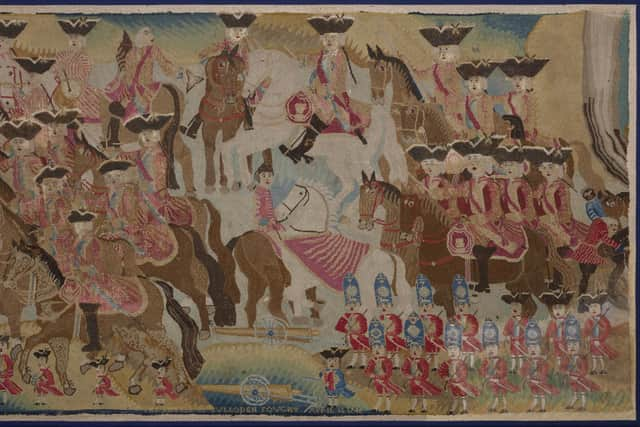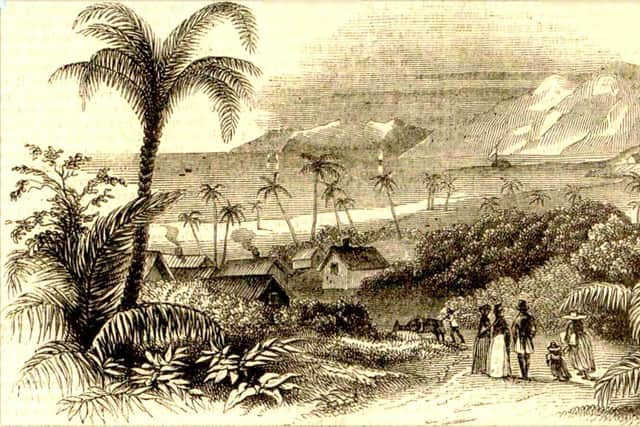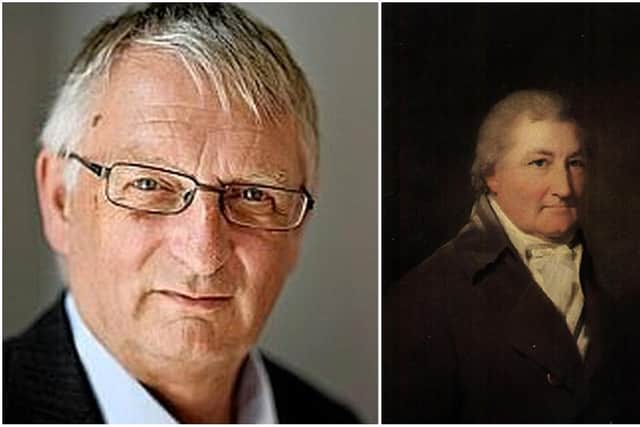The Jacobites who turned slave owners after Culloden
Dr David Alston, author of Slaves and Highlanders, the Silence Histories of Scotland and the Caribbean, will share his research at an event at Culloden on Saturday, which has been organised to commemorate the 276th anniversary of the battle, fought on April 17, 1746.
The author will focus on the Jacobite-supporting Cuming of Craigmiln family, based near Elgin and whose fortune was rebuilt in the plantations of Demerara, now Guyana, on the north coast on South America, in the aftermath of the failed 1745 Jacobite rising which saw supporters routinely stripped of their assets, imprisoned, or both.
Advertisement
Hide AdAdvertisement
Hide AdDr Alston said: “I suppose it makes sense in a way. After Culloden, what do you do? Particularly if you are trying to find a route back to respectability and wealth, and particularly if you want to return to Scotland.”


Alexander Cuming, 3rd of Craigmiln, fought at Culloden alongside the Duke of Perth but was captured after returning to the field to find his son, William.
He was transported to London on the Dolphin prisoner ship but died that year. His son escaped to France, where he rose to become a chevalier of the Order of St Louis.
Alexander’s five daughters, of Dufftown, remained staunchly loyal to the fading Jacobite cause in the decades following Culloden.


Dr Alston said the youngest sister, Eliza, always dressed in black as a sign of mourning for the Stuart’s loss of the British throne, only wearing colour again after the death of George III in 1820.
Meanwhile, his son Thomas, left for Demerara around 1760, where he became one of the early slave owners, ultimately buying up 600 enslaved African and two sugar plantations – the Garden of Eden and the Ketty estates.
He rose to be a colony council member which was involved in the surrender of Dutch colony to British forces in 1796.
According to Dr Alston, he returned to Scotland in 1798, bought Innes House near Elgin, styled himself Thomas Cuming Esquire of Leuchars and had his portrait painted by society artist Henry Raeburn.


Advertisement
Hide AdAdvertisement
Hide AdThat year, he attended a meeting in Inverness to found the Northern Infirmary but letters around this time outline his dwindling finances, Dr Alston said.
Following the death of his wife in January 1800, Thomas sold up Innes House and returned to Demerara. He died in Elgin in 1813.
Then, properties in Demerara were transferred to three children of two local women.
Dr Alston has unravelled a vast network of links between the Highlands, the trade of enslaved Africans and wealth derived in the plantations of the West Indies and the North American colonies.
Dr Alston said it was unclear the scale of Jacobites who went on to own slaves although he pointed to other academic research which 'shows how Scottish planters, often of Jacobite descent, strongly opposed the abolition of slavery’.
Dr Alston’s talk is part of a series of events at Culloden over the anniversary weekend, including a service on the battlefield today led by the Gaelic Society of Inverness.
A message from the Editor:Thank you for reading this article. We're more reliant on your support than ever as the shift in consumer habits brought about by Coronavirus impacts our advertisers.
If you haven't already, please consider supporting our trusted, fact-checked journalism by taking out a digital subscription.
Comments
Want to join the conversation? Please or to comment on this article.
